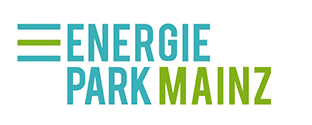
Energy
The future belongs to renewable energy sources. In Germany, electricity from renewable sources accounts for approximately 25% of the power supplied. The German government aims at raising the share of renewable energies to 35% by 2020 and to 80% by 2050. The largest part will be delivered by wind energy.
Rheinland-Pfalz plans to go beyond the government aims:
By 2030 renewable energies are to satisfy the total demand for electric power in Rheinland-Pfalz – more than two thirds will be delivered by wind energy. The number of 1,200 wind power plants today approximately needs to double until then. In Greater Mainz and in the Hunsrück area, the annual production of wind turbines already reaches 2,000 to 3,000 full-load hours of energy1. Photovoltaic systems deliver about 1,000 full-load hours per year.
Wind and solar radiation are discontinuous and are only temporarily available. Therefore the power from wind and solar systems must be converted so that it can be stored and used when required.
Hydrogen is predestined for these requirements:
Hydrogen can be produced anywhere by electrolysis. All you need is electric power and water. Water consumption only plays a minor role: for example, to store the entire production of an average wind turbine (approx. 4 GWh: equal to the annual power consumption of 1,100 households in Mainz) in form of hydrogen, approximately 700 m3 of fresh water are needed. That is equal to the annual water consumption of only 5 households in Mainz.
There is a wide range of storage and transport solutions for hydrogen.
Hydrogen burns without emission of greenhouse gases.
In a fuel cell, hydrogen can be converted directly and highly efficiently into electric power – without loss of combustion heat or mechanical energy. But hydrogen can also be used in gas power plants to generate electric power.
Hydrogen enables the indirect use of green electricity as fuel for fuel cell vehicles.
In addition hydrogen is also an important industrial gas: It can be the door-opener for renewable energies to a huge number of further applications.
- Full-load hours are the result of the total energy produced annually by a power plant, divided by the plant’s maximum output. Example: A 2 MW wind turbine that produces 5,000 MWh of energy per year delivers 2,500 full-load hours. Since there are 8,760 hours in a year, this is equal to an average plant utilization of approx. 29%.
